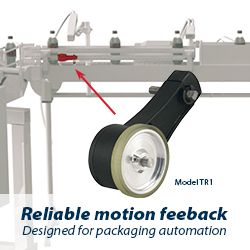A New Effort to Teach Low-Income Students Marketable Skills
How to prepare a business for an Industry 4.0 network
Brookings Report - America's advanced industries: New trends
Special Tradeshow Coverage for The International Manufacturing Technology Show (IMTS 2016)
Brushless DC Motors vs. Servo Motors vs. Inverters
Aerospace Manufacturing: A Need to Innovate, But No One to Do the Work
Do the benefits of robotics outweigh the heavy demands on infrastructure?
Upcoming Tradeshow, Conference & Exhibition Summary - September - December 2016
Robots in Manufacturing Applications
Industry 4.0 Needs a New Generation of 3D Tools
IISc building India's 1st smart factory in Bengaluru
Robotics, automation, and how a strong network is needed to connect it all up
Industrial digitisation on fast track
Method for Calculating Moment Loads on Linear Actuators
Is There a Tomorrow for Manufacturing in the United States?
Records 1561 to 1575 of 1701
First | Previous | Next | Last
Automation & IIoT - Featured Product

